5 Signs of Foundation Settlement
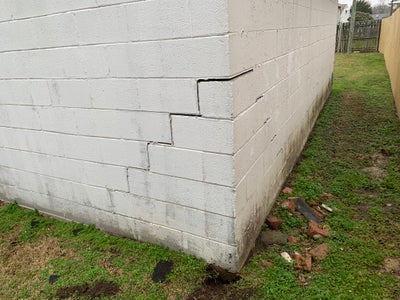
Home damage can be alarming, but the signs of foundation settlement and sinking are particularly concerning. A settling foundation puts your home’s structural stability and your family’s safety at risk.
It’s a good idea to regularly check for signs of foundation settlement and address any problems with professional help to avoid further damage and costly repairs down the line. Read on to learn about five common signs of foundation damage.
How to Know if Your Foundation Is Settling
As a homeowner, you have plenty to manage. Recognizing potential foundation issues early can save you time and money. Here are the five most common signs of foundation settlement:
1. Stair-step Cracking

Stair-step cracks in brick and concrete block walls are typical indicators of foundation settlement. These cracks usually follow a zigzag pattern and can widen as the home continues to settle, showing that the wall is shifting or bowing inward.
2. Drywall Cracks and Nail Pops
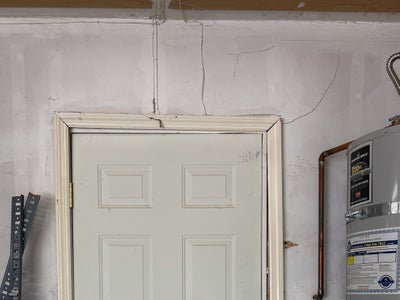
Cracks in drywall, especially ones extending from the corners of doors and windows, are a common sign of foundation settlement. These cracks are usually more noticeable on the upper floors. Additionally, drywall nail pops may occur as the foundation shifts, leading to small pockmarks on the walls.
3. Gaps Between Walls, Floors, Doors, & Windows
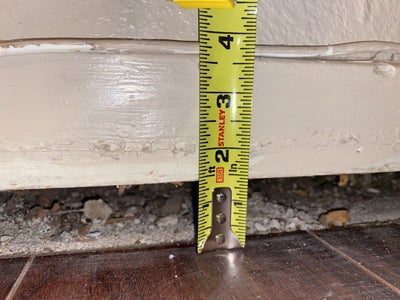
Gaps between your walls and doors or windows can indicate foundation settlement. As the foundation shifts, it leads to structural misalignment, resulting in uneven floors and spaces.
4. Doors and Windows Sticking
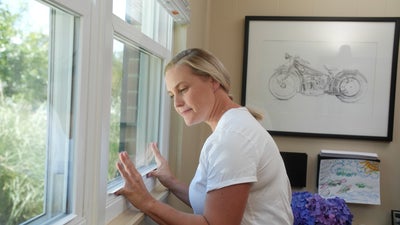
When doors and windows become difficult to open or close, it’s often a sign of foundation settling. As the foundation shifts, the frames can shift as well, leading to sticking and misalignment.
5. Chimney Separation
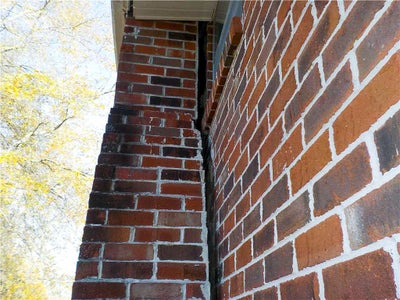
A leaning or cracking chimney is a significant sign of foundation settlement. Since chimneys are often built on a separate foundation, they are more susceptible to movement when your home’s foundation settles. If left unaddressed, a leaning chimney can pose serious safety risks, including the potential for collapse.
Why Your Foundation Is Settling
Foundation settlement is usually caused by issues with the soil beneath and around your home. Here are some common factors that contribute to this problem:
- Soil Type: Different soil types have varying characteristics. For instance, clay-based soils are highly expansive and can cause significant shifting when they absorb or lose moisture.
- Exposure to Moisture: Excessive moisture from heavy rains, floods, or improper drainage can soften the soil, leading to settlement. Clay soils are particularly problematic because they expand when wet and shrink when dry.
- Invasive Tree Roots: Trees with extensive root systems can draw moisture from the soil, causing it to dry out and destabilize the foundation.
- Building Practices: If the soil beneath a home is not properly compacted during construction, it can settle further under the home’s weight, causing the foundation to shift.
How to Repair a Settling Foundation
Repairing a settling foundation requires professional expertise. At Groundworks, our team uses advanced techniques and tools to ensure a permanent solution. Here are three common methods we use to stabilize foundations:
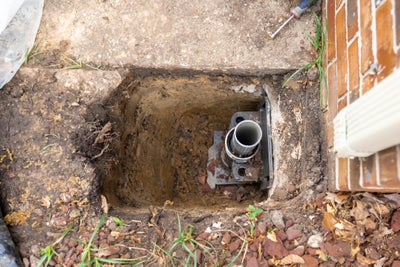
- Push Piers: These steel piers are driven deep into the soil to reach bedrock or stable soil layers. They lift the home to a level position, close cracks, and improve the operation of doors and windows.
- Helical Piers: These piers get their name from the helical blades that screw into the ground, providing stability and potentially lifting the foundation. Helical piers are suitable for lighter structures.
- Slab Piers: These piers stabilize and lift concrete slabs. Like push piers, they are installed deep into stable soil or bedrock, providing support and lifting the slab back to a level position.
Contact Groundworks for a Free Foundation Inspection
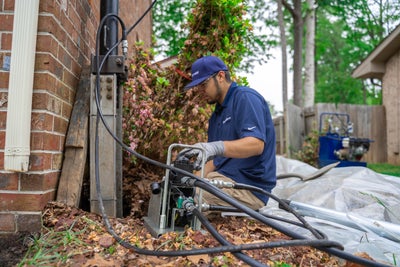
Identifying foundation issues is the first step toward a safer and more secure home. The next step is to work with a trusted professional team like Groundworks. If you suspect your home’s foundation is settling, don’t wait—contact Groundworks for a free inspection and reliable repair solutions
Foundation FAQs
Yes, poor drainage (such as damaged gutters) can lead to water pooling around the foundation, potentially causing soil expansion and contraction. Over time, this weakens the foundation, leading to cracks and other structural issues.
Foundation problems can occur in both older and newer homes. However, older homes might be more susceptible due to wear and tear over time.
Selling a home with foundation problems is possible, but you typically need to disclose the issues to potential buyers, which may lower the sale price. Repairing the foundation before selling often results in a better price.